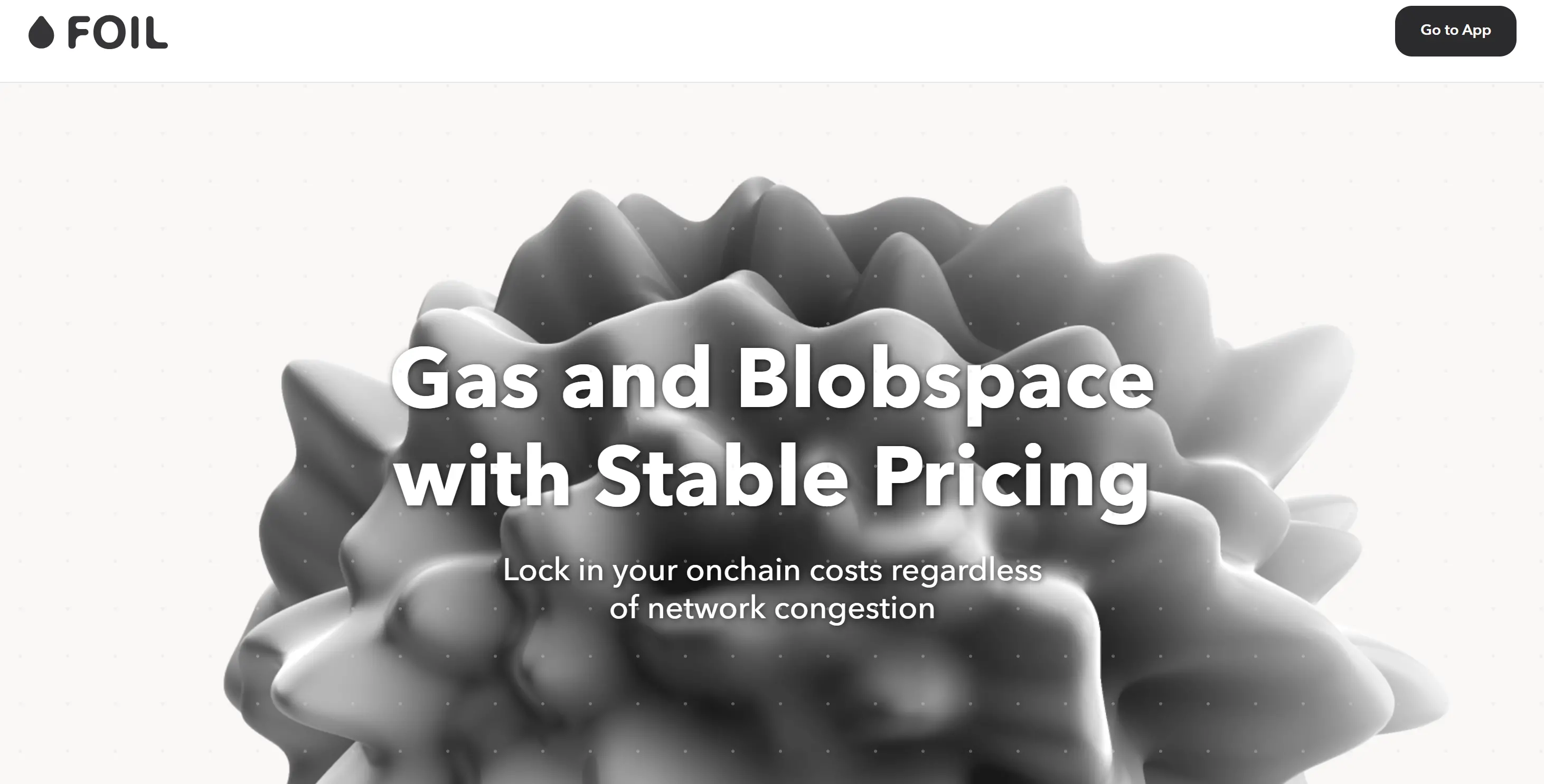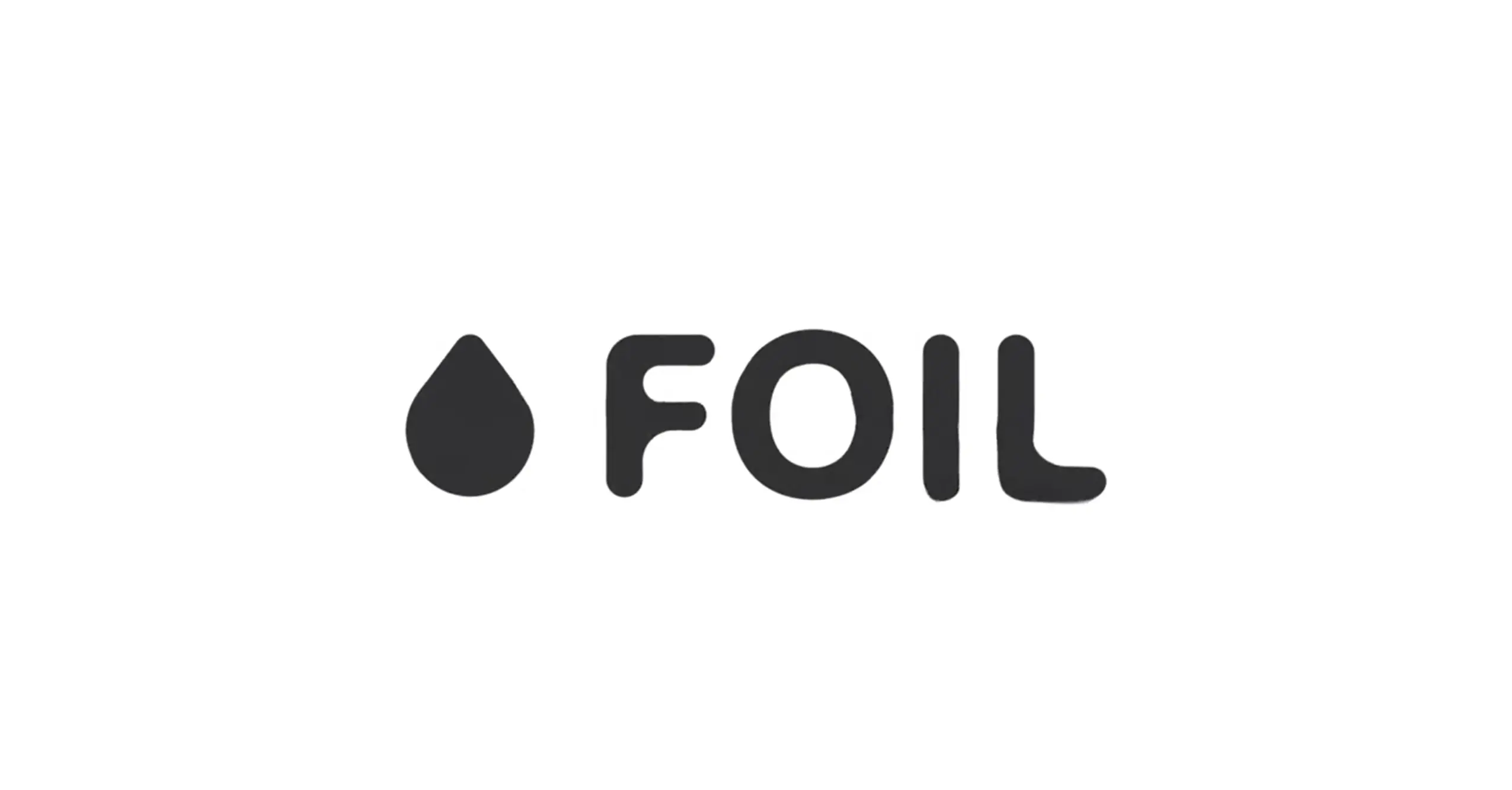Author: Fairy, ChainCatcher
Editor: TB, ChainCatcher
Every on-chain user has experienced the "roller coaster" of Gas fees—transaction costs are low during periods of low network load, but during peak times, Gas fees can skyrocket several times. This volatility not only affects ordinary users but also puts immense cost pressure on institutions such as DeFi traders, oracle nodes, CEX, and Rollup operators.
Recently, the birth of the decentralized on-chain resource trading protocol Foil aims to address this issue: the core goal of Foil is to redefine the pricing mechanism of block space by creating an on-chain fee market, thereby alleviating the challenges brought by Gas fee fluctuations.

How does Foil work?
Foil is reshaping the on-chain Gas fee market through Foil V1, providing developers, institutions, and ordinary users with a more stable transaction cost management solution.
Foil V1 supports a Gas subscription market settled in ETH, tracking the average Gas fees of Ethereum L1, allowing users to lock in future costs through a subscription-like model, avoiding drastic fluctuations in Gas prices. This innovation will open up an on-chain Gas trading market exceeding $3 billion, providing a more efficient and predictable Gas fee solution for the on-chain ecosystem.
Key Highlights:
- Gas Subscription: Users can purchase Gas subscription plans to lock in future Gas fees in advance, hedging against market volatility with fixed costs and reducing the uncertainty of transaction costs.
- Bilateral Market: Foil employs the Uniswap mechanism for price discovery, enabling liquidity providers (LP) to freely trade Gas fee contracts, making Gas prices more market-oriented and transparent.
- Modular Design: Foil has strong scalability, supporting Celestia, Ethereum DA, L2 Rollups, and AppChains, allowing any on-chain fee market to be quickly deployed, providing customized Gas fee management solutions for different ecosystems.
Foil Team Background and Development Status
Noah Litvin, the co-founder of Foil, is an influential developer. He not only founded Foil but is also a co-creator of Cannon, an automation and development tool for EVM chain deployment, and a contributor to the Ethereum protocol standard ERC-7412.
According to social media information, Foil's core team also includes builders Rafa and Afif. Rafa has previously worked at Synthetix and Gnosis. They are collectively driving the technical research and implementation of Foil.
Additionally, according to information on the official website, Foil has received support from several well-known institutions and individual investors, including Crucible Capital, CMS Holdings, Zeal Capital, Public Works, as well as echo founder Cobie, The Block CEO Larry Cermak, and Celestia co-founder Ismail Khoffi.
In terms of project progress, the Foil Gas market mainnet test version has been launched on Base, supporting the Ethereum Gas fee market and Blobs trading market for March and April, providing on-chain traders with a more stable and transparent Gas fee management method. Meanwhile, Foil has also launched an on-chain resource market data tracking portal, allowing users to monitor key indicators of major on-chain resource markets in real-time, further optimizing trading strategies and cost management.

Future Development of Foil
Foil's ultimate goal is to create a complete decentralized product system that fundamentally eliminates the trading pain points caused by Gas fee fluctuations. By breaking free from the limitations of Ethereum L1, Foil will explore more innovative design solutions, further optimizing transaction efficiency on Layer 2 and other chains, providing users with a smoother experience.
(This article only introduces early projects and does not constitute investment advice.)
免责声明:本文章仅代表作者个人观点,不代表本平台的立场和观点。本文章仅供信息分享,不构成对任何人的任何投资建议。用户与作者之间的任何争议,与本平台无关。如网页中刊载的文章或图片涉及侵权,请提供相关的权利证明和身份证明发送邮件到support@aicoin.com,本平台相关工作人员将会进行核查。




